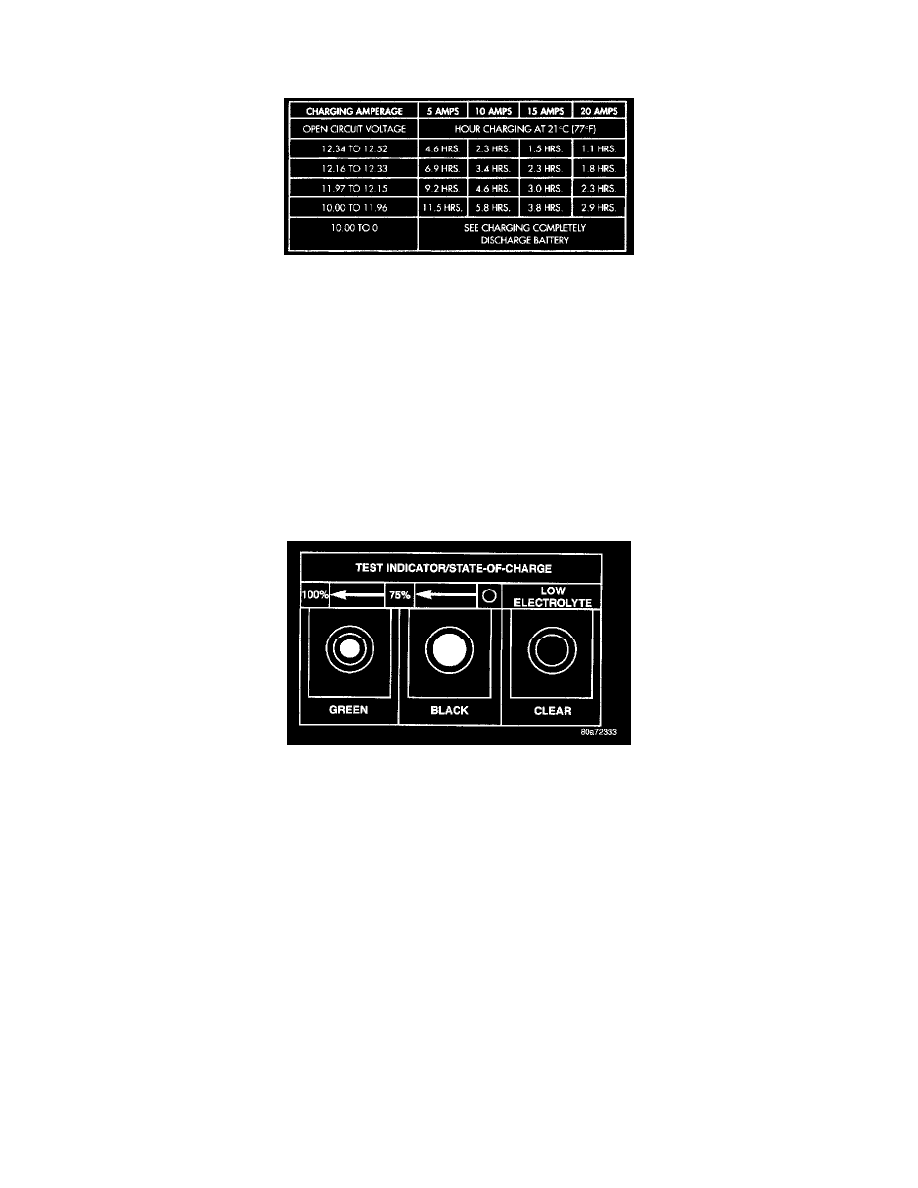Caravan FWD L4-2.4L VIN X (1997)

Battery: Description and Operation
Charging Time Required
Battery Charging Time
WARNING: NEVER EXCEED 20 AMPS WHEN CHARGING A COLD -1 °C (30 °F) BATTERY. PERSONAL INJURY MAY RESULT.
The time required to charge a battery will vary depending upon the following factors:
Size Of Battery
A completely discharged large heavy-duty battery may require more recharging time than a completely discharged small capacity battery, refer to
the chart for charging times.
Temperature
A longer time will be needed to charge a battery at -18 °C (0 °F) than at 27 °C (80 °F). When a fast charger is connected to a cold battery, current
accepted by battery will be very low at first. In time, the battery will accept a higher rate as battery temperature warms.
Charger Capacity
A charger which can supply only five amperes will require a much longer period of charging than a charger that can supply 20 amperes or more.
Built-In Test Indicator Sight Glass
State Of Charge
A completely discharged battery requires more charging time than a partially charged battery. Electrolyte is nearly pure water in a completely
discharged battery. At first, the charging current amperage will be low. As water is converted back to sulfuric acid inside the battery, the current
amp rate will rise. Also, the specific gravity of the electrolyte will rise, bringing the green ball into view at approximately 75 percent
state-of-charge.
